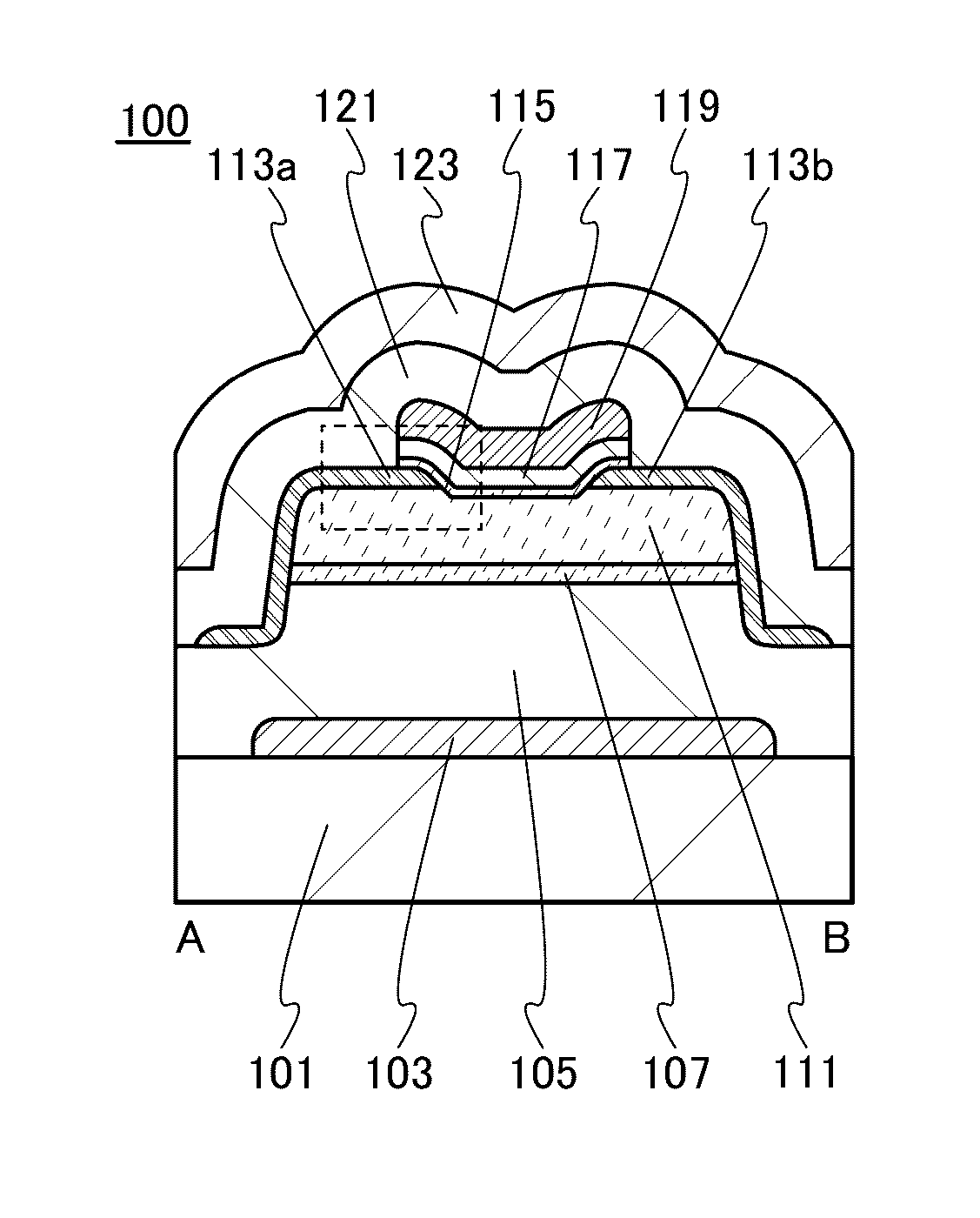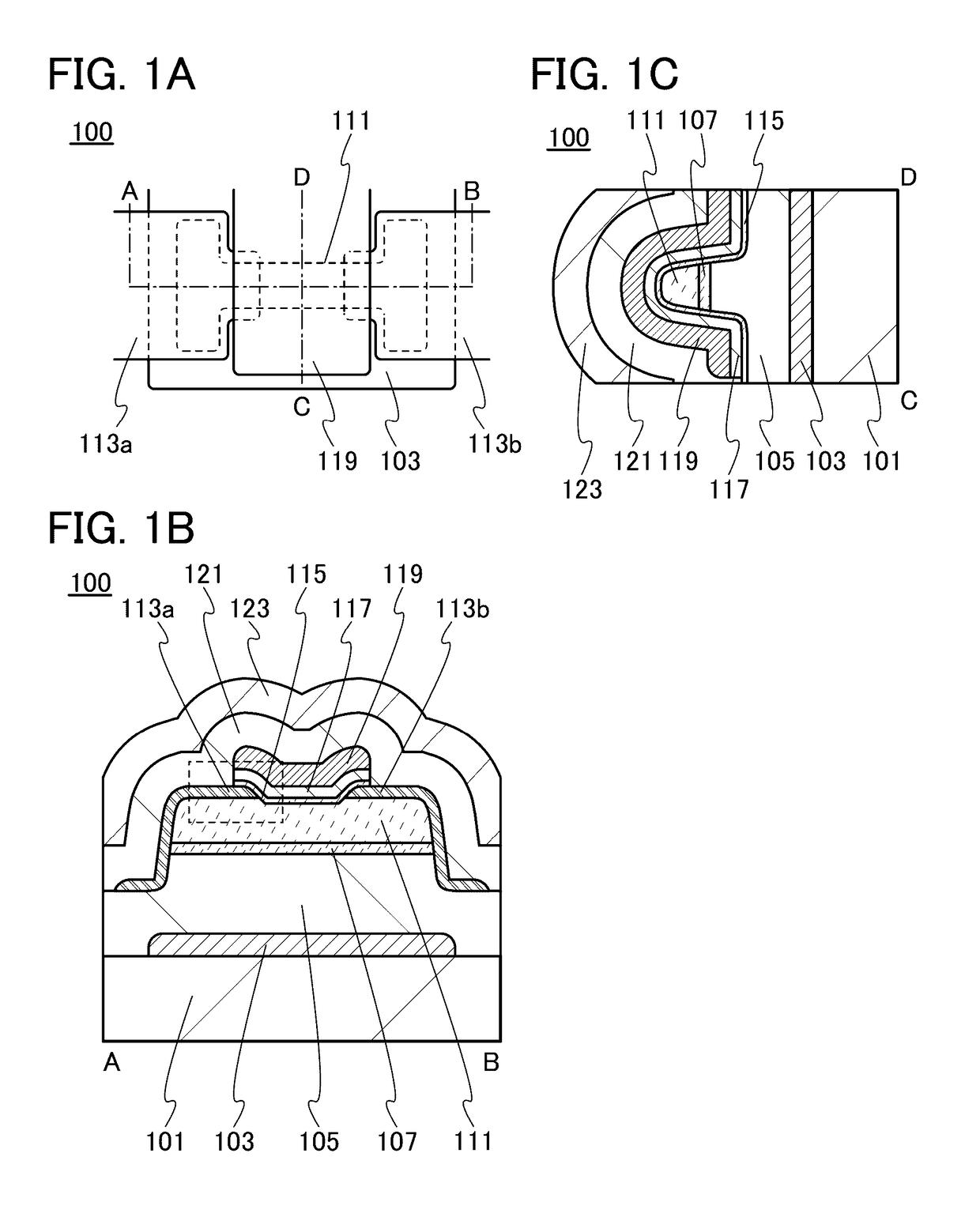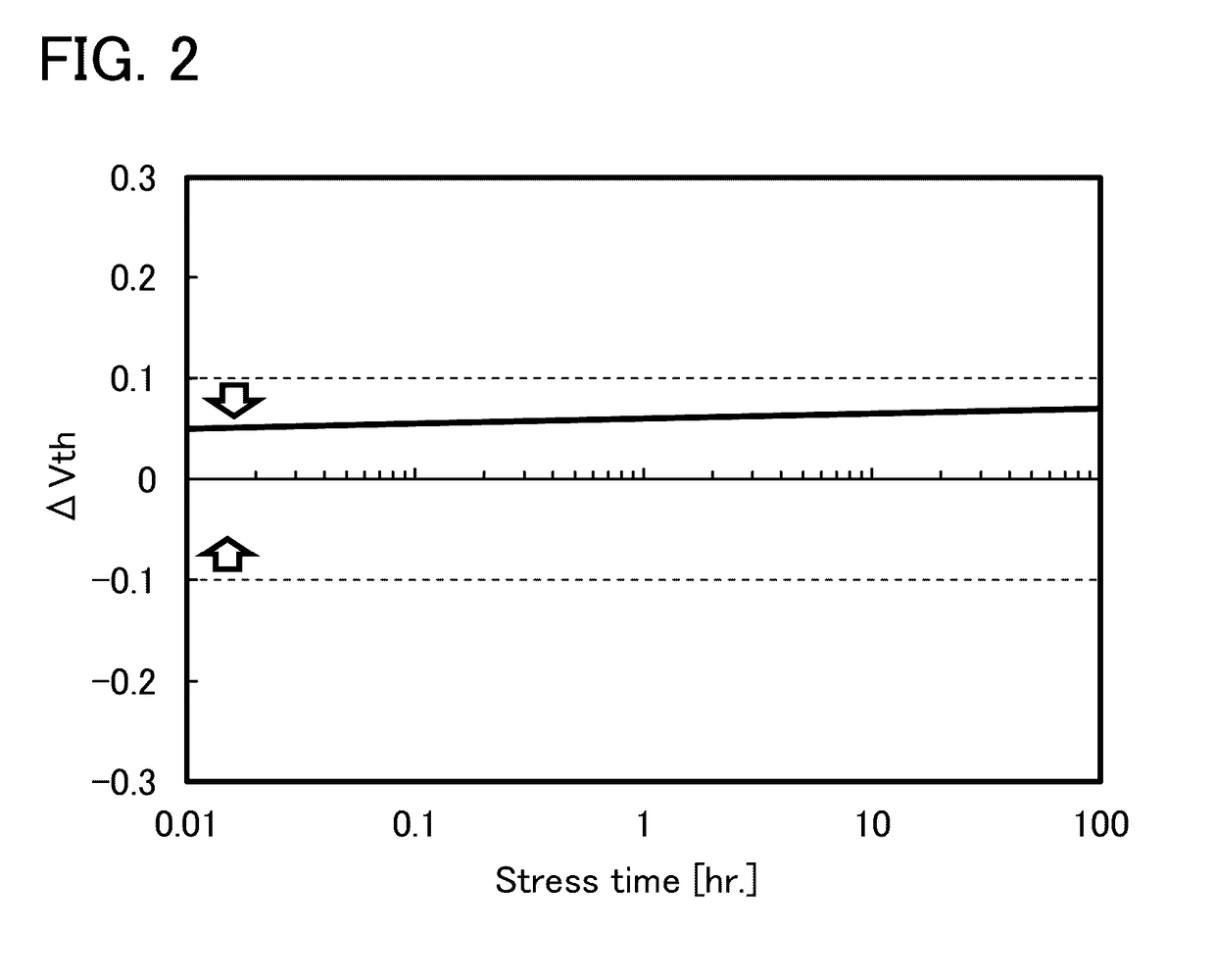Manufacturing method of semiconductor device
a manufacturing method and semiconductor technology, applied in the direction of semiconductor devices, electrical equipment, transistors, etc., can solve the problems of poor electrical characteristics of transistors, and achieve the effect of improving the electrical characteristics improving the reliability of a semiconductor device using an oxide semiconductor
- Summary
- Abstract
- Description
- Claims
- Application Information
AI Technical Summary
Benefits of technology
Problems solved by technology
Method used
Image
Examples
embodiment 1
[0089]The threshold voltage of a transistor using an oxide semiconductor film including oxygen vacancies easily shifts in the negative direction, and such a transistor tends to be normally-on. This is because electric charges are generated owing to oxygen vacancies in the oxide semiconductor film, and the resistance is reduced. In addition, a transistor using an oxide semiconductor film including oxygen vacancies has such a problem that the electrical characteristics, typically, the threshold voltage, are changed with time or changed by a stress test (typically, a gate bias-temperature (BT) stress test under light irradiation). In this embodiment, a highly reliable semiconductor device with a small change in threshold voltage and a manufacturing method thereof will be described. Further, a semiconductor device with excellent electrical characteristics and a manufacturing method thereof will be described.
Structure Example of Semiconductor Device
[0090]In this embodiment, a method for ...
modification example 2
[0291]A transistor including a pair of electrodes with a different shape from that of the pair of electrodes 113a and 113b in the transistor 100 illustrated in FIGS. 1A to 1C will be described with reference to FIGS. 7A to 7D.
[0292]FIGS. 7A to 7D are a top view and cross-sectional views of a transistor 100d of a semiconductor device. FIG. 7A is a top view of the transistor 100d, FIG. 7B is a cross-sectional view taken along dashed-dotted line A-B in FIG. 7A, FIG. 7C is a cross-sectional view taken along dashed-dotted line C-D in FIG. 7A, and FIG. 7D is a cross-sectional view taken along dashed-dotted line E-F in FIG. 7A.
[0293]FIG. 7B is a cross-sectional view in the channel length direction of the transistor 100d, FIG. 7C is a cross-sectional view in the channel width direction of the transistor 100d, and FIG. 7D is a cross-sectional view in the channel width direction of the transistor 100d showing the region where the pair of electrodes and the oxide semiconductor films are stacke...
modification example 3
[0305]A transistor including the oxide semiconductor film 111 with a different shape from that in the transistor 100 illustrated in FIGS. 1A to 1C will be described with reference to FIGS. 10A to 10C.
[0306]FIGS. 10A to 10C are a top view and cross-sectional views of a transistor 100e included in a semiconductor device. FIG. 10A is a top view of the transistor 100e, FIG. 10B is a cross-sectional view taken along dashed-dotted line A-B in FIG. 10A, and FIG. 10C is a cross-sectional view taken along dashed-dotted line C-D in FIG. 10A.
[0307]FIG. 10B is a cross-sectional view in the channel length direction of the transistor 100e and FIG. 10C is a cross-sectional view in the channel width direction of the transistor 100e.
[0308]Note that in FIG. 10A, the substrate 101, the gate insulating film 105, the oxide semiconductor film 107, the gate insulating film 117, the insulating film 121, the insulating film 123, and the like are not illustrated for simplicity.
[0309]As illustrated in FIG. 1...
PUM
 Login to View More
Login to View More Abstract
Description
Claims
Application Information
 Login to View More
Login to View More - R&D
- Intellectual Property
- Life Sciences
- Materials
- Tech Scout
- Unparalleled Data Quality
- Higher Quality Content
- 60% Fewer Hallucinations
Browse by: Latest US Patents, China's latest patents, Technical Efficacy Thesaurus, Application Domain, Technology Topic, Popular Technical Reports.
© 2025 PatSnap. All rights reserved.Legal|Privacy policy|Modern Slavery Act Transparency Statement|Sitemap|About US| Contact US: help@patsnap.com



